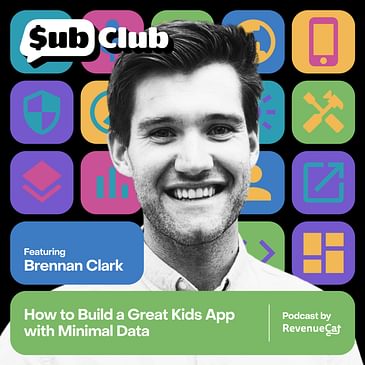On the podcast we talk with Brennan about the challenge of building and growing kids apps in 2022, how to make effective decisions with minimal data, and why AppsFlyer had to build Sago Mini a custom SDK.
Top Takeaways
🧒 Building and growing kids apps is hard
🤔 Making effective decisions with minimal data is a challenge
💕 Find the right partner to invest in solving tough challenges together — especially if it’s a custom job
About Brennan Clark
👨💻 Director of Product at Sago Mini, which has received more than 100 million downloads. The company offers three subscription apps for preschoolers, a recently launched show on Apple TV+, and a physical subscription box.
💡 “We've staked our claim in this high-quality, interactive content — that's our competitive advantage. We invest a lot in creating the best content for kids as possible [and] making sure it's interactive. It's not passive YouTube Kids-style content.”
👋 LinkedIn
Links & Resources
‣ Check out Sago Mini
‣ Work at Sago Mini
‣ Connect with Brennan at LinkedIn
Follow us on Twitter
‣ David Barnard
‣ Jacob Eiting
‣ RevenueCat
‣ Sub Club
Episode Highlights
[2:01] Building basics: When you build a kids app, you’re building both for the user (the kid) and the consumer (the parent) who pays. Building for preschoolers who can’t read yet is a challenge layered on top.
[8:11] Think of the parent: Sago Mini complements its kids-first experience with a parent app to demonstrate the value of the app to parents directly. But how does it balance the two and prevent churn from each group?
[12:35] The pitch: Providing the best digital tools and products for preschoolers means exploring different engaging avenues of kids learning — instead of letting them passively follow (scary) YouTube algorithms. The key is emphasizing what Brennan calls “high-quality screen time.”
[16:00] What data?: Kids data management is a huge topic. Getting creative with partners might be the best solution, and Sago Mini struck gold with AppsFlyer’s custom SDK job. But it’s just as important that you (or your partners) don’t collect more data than you need.
[23:11] Product testing: Product and UX design testing is a weekly thing at Sago Mini. It’s tough to put yourself in kids’ shoes, but it’s also crucial to get features right.
[26:54] Paid ads: Sago Mini can’t use the IDFA or ATT prompt, and is about to lose its Google Ad ID. With additional pressure on retention, how does it work with so many constraints? (Hint: they get creative with ToFu.)
[36:14] Mixing up the channels: Apple Arcade is a highly-curated safe space, perfectly aligned with Sago Mini’s value — it’s also not as crowded by preschooler content as other platforms are. But it’s the Apple TV+ show that’s really driving 80% of their revenue.
[42:03] The web experience: While some kids companies build their entire funnel on the web, Sago Mini views it more as a lead-generating, ToFu strategy to get kids on the apps ASAP.
[44:25] Innate ceilings: Brennan talks about one of the biggest “problems” kids app developers face, and how looking at the path holistically helps.




